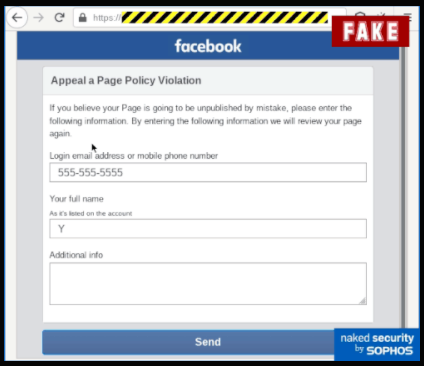Une nouvelle vulnérabilité d’hameçonnage utilise la menace de violation des droits d'auteur de Facebook pour contourner l’AMF

Une nouvelle vulnérabilité d’hameçonnage utilise la menace de violation des droits d'auteur de Facebook pour contourner l’AMF (authentification multifacteur) et tromper les utilisateurs. Le directeur principal de la cybersécurité de Hikvision, Chuck Davis, couvre aujourd'hui cette nouvelle cybermenace.
L'authentification multifacteur ajoute au moins deux éléments de preuve ou facteurs vérifiables au processus d'authentification pour réduire considérablement les problèmes de sécurité, en réduisant les chances d'accès à un compte par la mauvaise personne. L'authentification à deux facteurs (A2F) est un sous-ensemble de l'authentification multifacteur et constitue un moyen d'authentification avec seulement deux éléments de preuve ou facteurs vérifiables.
Tentatives d'escroquerie sur Facebook pour contourner l'AMF
Une nouvelle attaque d’hameçonnage intelligente contre les membres de Facebook menace de violer les droits d'auteur, pour inciter les utilisateurs à partager leurs informations de connexion et leur code d’AMF.
Naked Security explique que l'attaque commence par un courriel informant la victime pour lui signaler qu’il y a des violations de droits d'auteur sur sa page Facebook. La victime est dirigée vers une page Internet malveillante qui est hébergée sur Facebook.com, plutôt qu'un domaine similaire, ce qui est courant dans les cyberattaques. Pendant le processus de dépôt de l'appel, la victime est invitée à saisir son nom d'utilisateur et son mot de passe Facebook, puis à saisir ses informations d'authentification multifacteur
.Pour éviter de devenir victime de la cyberattaque de ‘‘violation du droit d'auteur’’ sur Facebook, vérifiez soigneusement l'expéditeur du courriel et vérifiez les adresses ou les liens dans les courriels et sur les pages des médias sociaux. Vous pouvez également suivre ces sept conseils pour éviter d'être victime d'un courriel d’hameçonnage. Ces recommandations proviennent de l'équipe de préparation aux urgences informatiques des États-Unis (US-CERT) et sont traitées dans ce blogue Hikvision.
blog.

- Filtrez le spam.
- Méfiez-vous des emails non sollicités.
- Traitez les pièces jointes avec précaution.
- Ne cliquez pas sur les liens dans les messages électroniques.
- Installez un logiciel antivirus et tenez-le à jour.
- Installez un pare-feu personnel et conservez-le à jour.
- Configurez votre client de messagerie pour plus de sécurité.
Conseil de sécurité : activez l'authentification multifacteur (AMF)
Comme nous l'avons vu dans l'arnaque Facebook ci-dessus, les attaquants ciblent l'authentification multifacteur pour accéder aux comptes de la victime. Mais ce n'est pas parce que les attaquants tentent d'inciter les utilisateurs à partager leurs codes d’AMF que vous ne devriez pas utiliser l’AMF. En fait, l'activation de l'authentification multifacteur sur vos comptes est l'un des meilleurs moyens de réduire considérablement la probabilité que vos comptes soient compromis.
Tous les sites Internet et applications ne prennent pas en charge l’AM, mais beaucoup le font. Pour voir quel site prend en charge l’AMF et obtenir des instructions sur la façon d'activer l’AMF, consultez la liste d'authentification à deux facteurs.
Pour en savoir plus sur l’AMF, lisez ce blogue Hikvision : “L’utilisation de l'authentification multifacteur (AMF) pour éviter les attaques d’hameçonnage et de vulnérabilités.”
